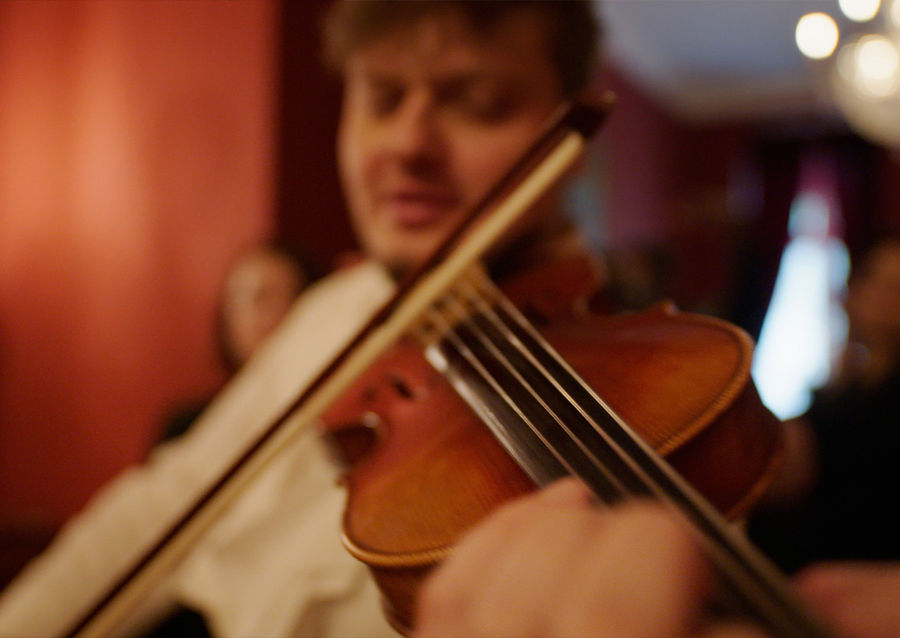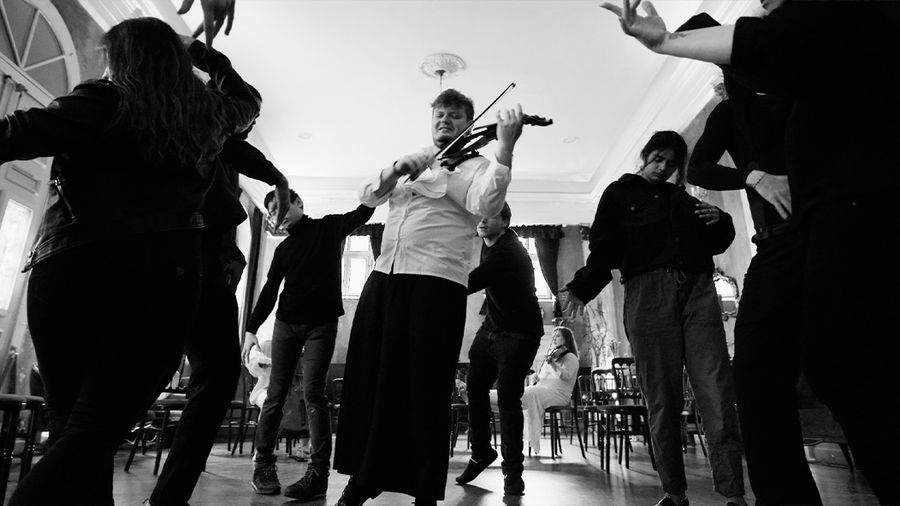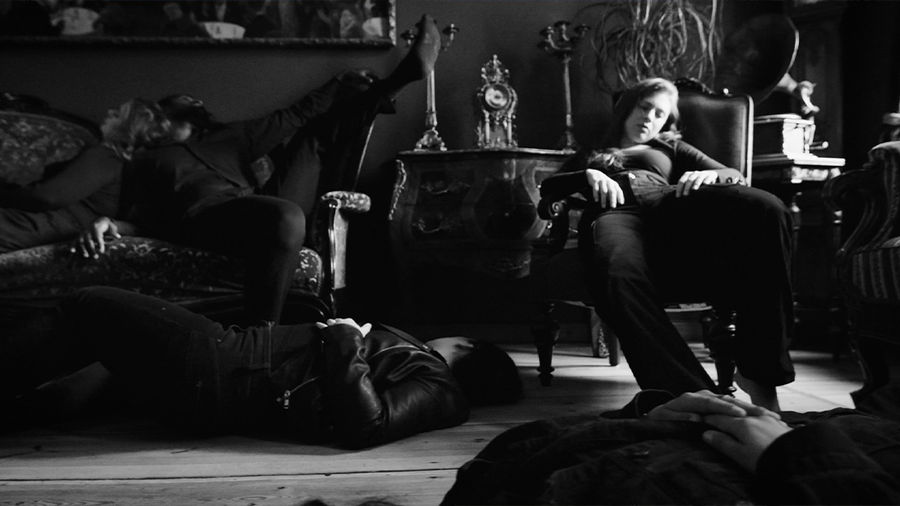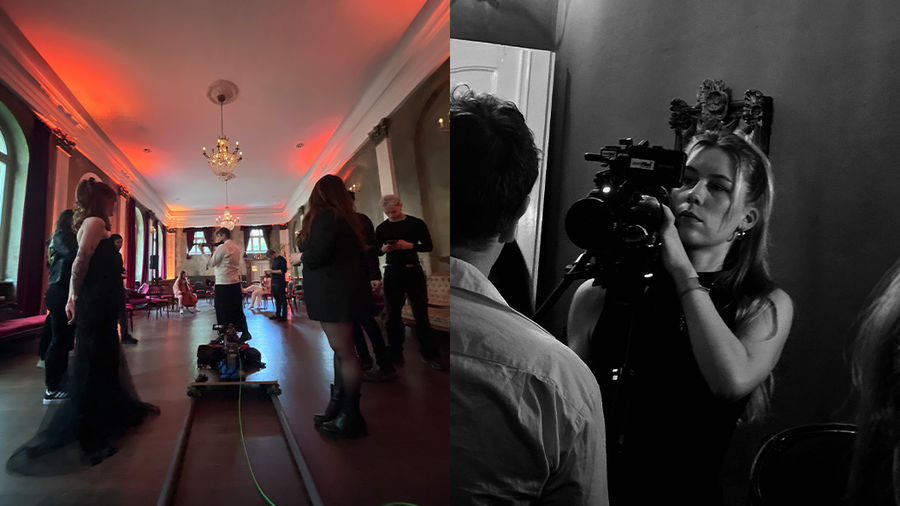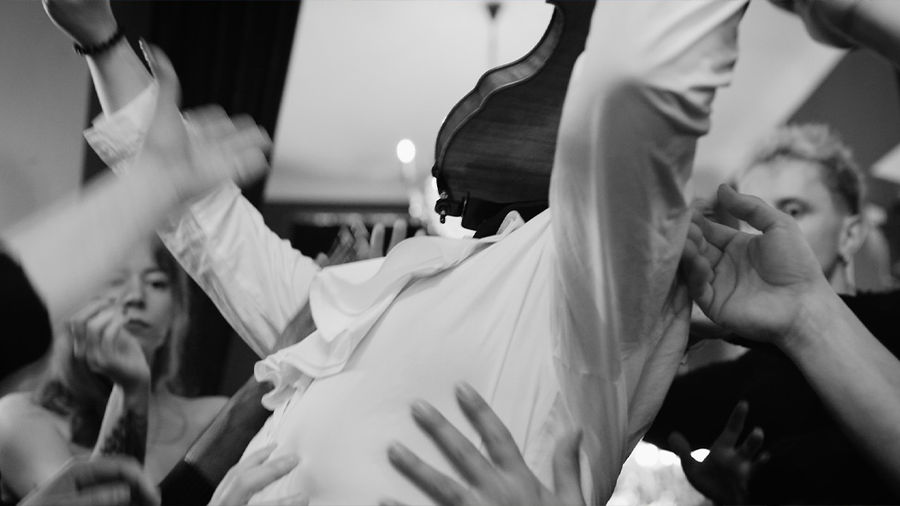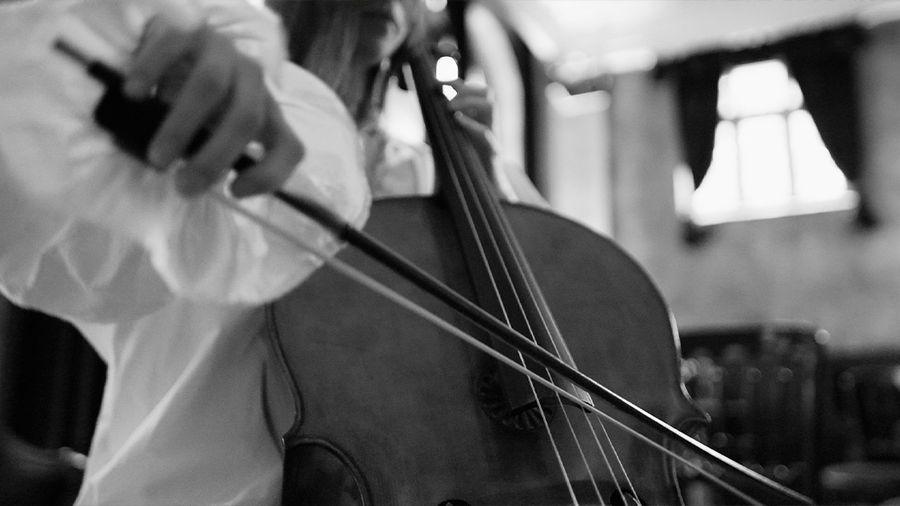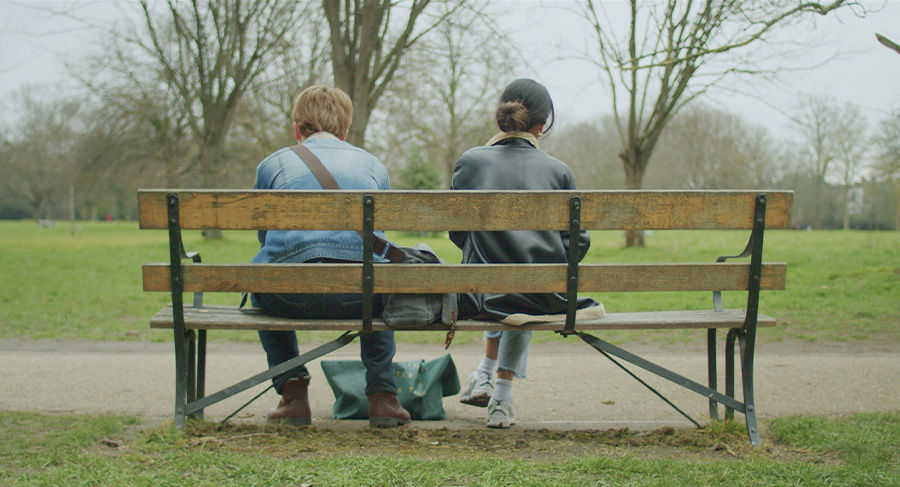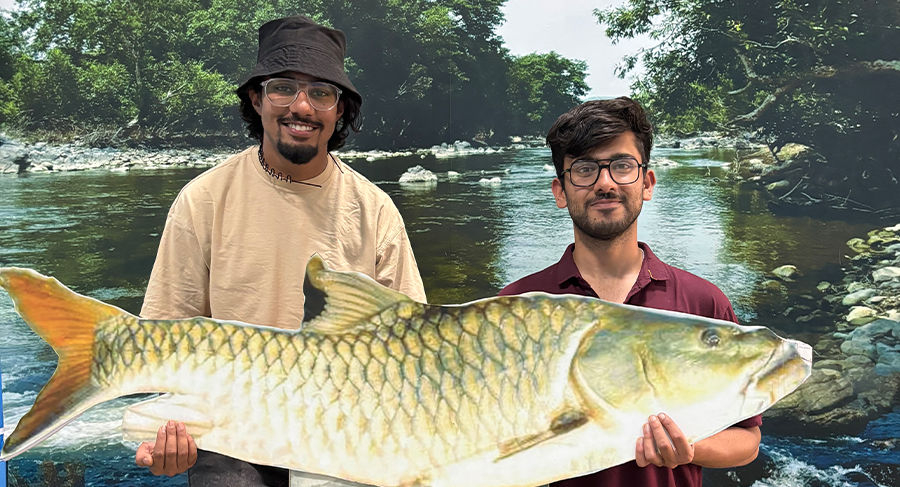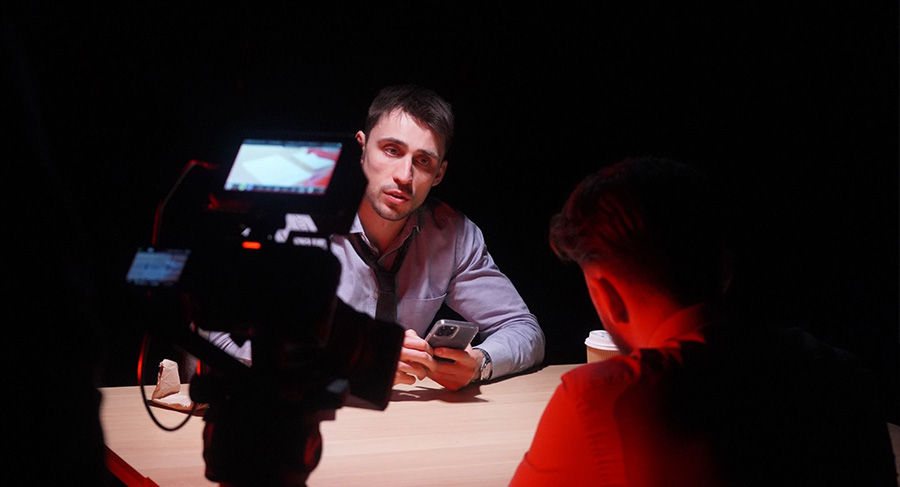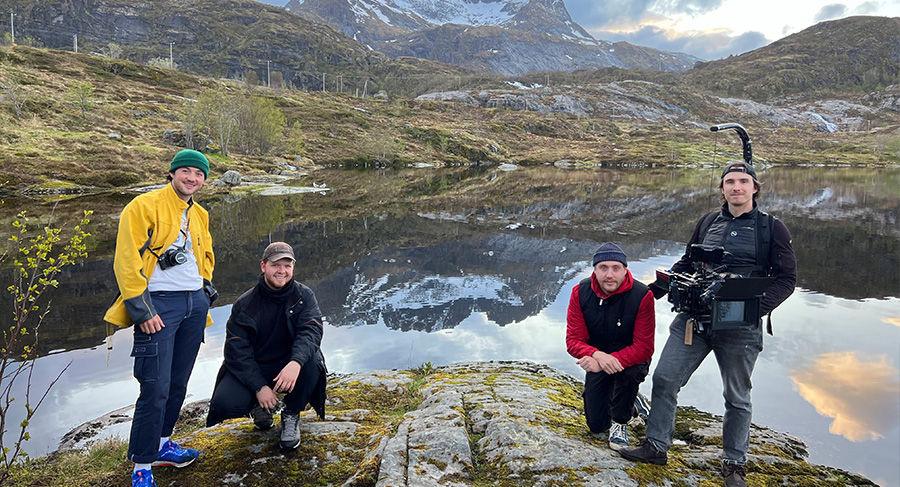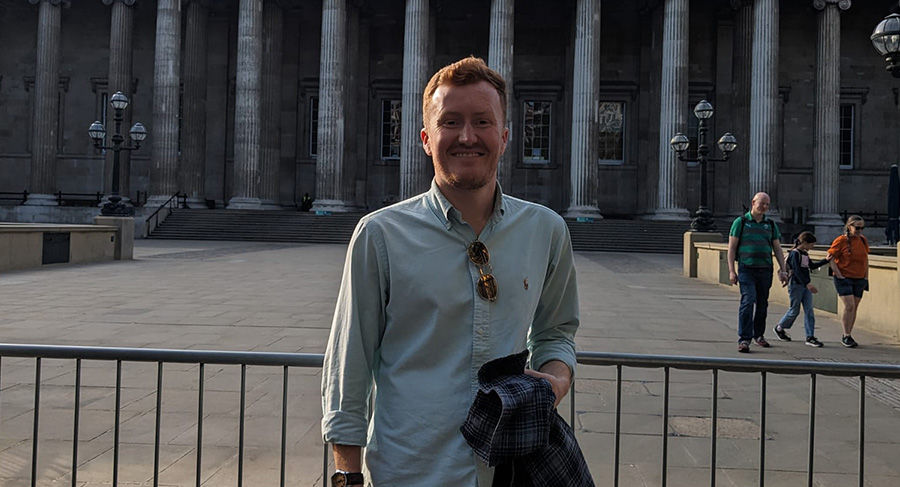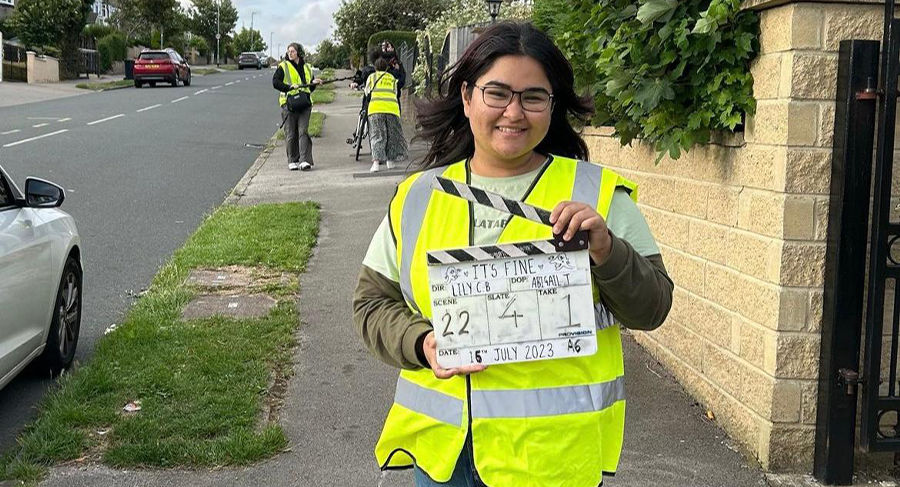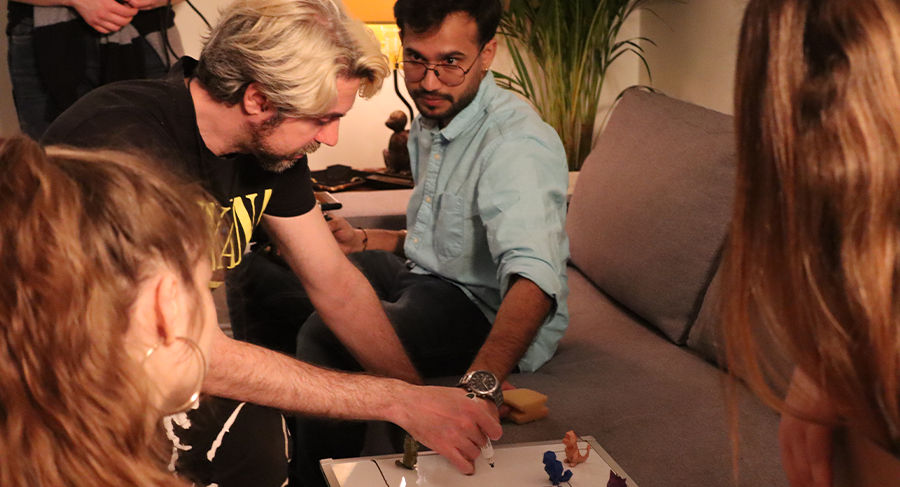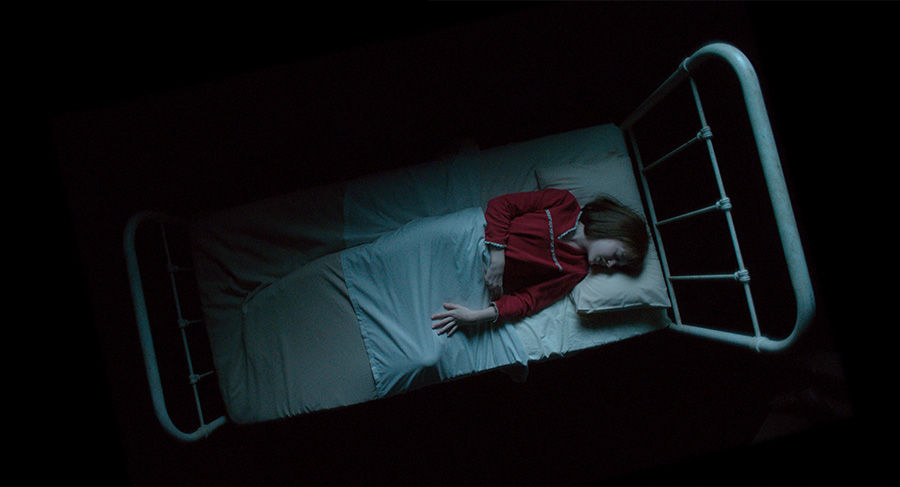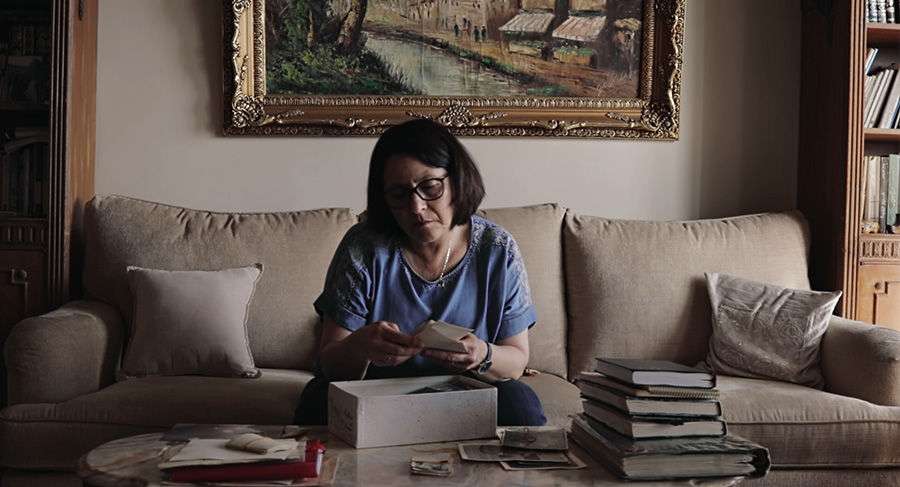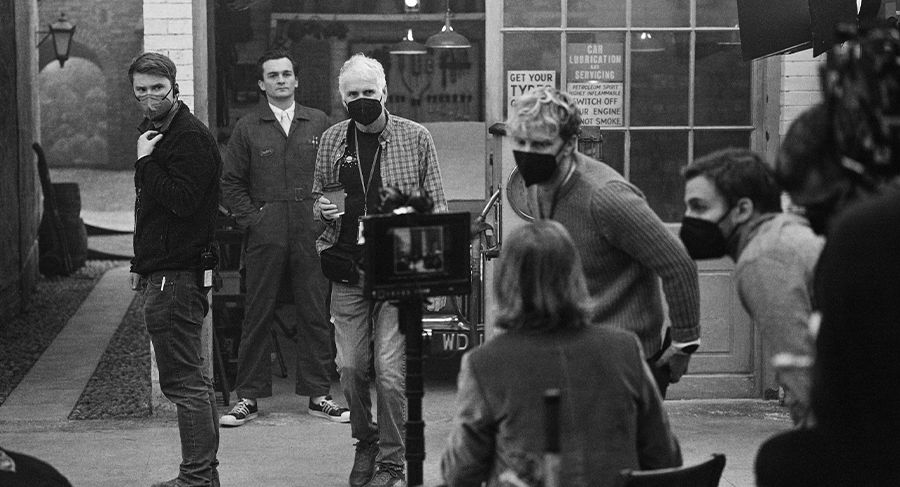5 String Theory: A Surreal Industry Project
By Elise Czyzowska
20 June 2024
Each year, our MA students collaborate on an ‘Industry Project’, which sees them produce work to a real-world client brief.
In Berlin, Alexey Kochetkov offered a surreal opportunity – to shoot his first music video for a song from his solo project, 5 String Theory.
In today’s blog, we spoke to two members of the team, Eli Ramraj (MA Directing) and Lili Zwirner (MA Cinematography) to find out more…
Eli Ramraj – Director
Can you share how this collaboration came about?
I have a great passion for collaborating with musicians. I’ve directed music videos, toured with bands as a photographer, and my narrative shorts are all about performers.
Seeing Alexey’s enthusiasm and passion in his pitch to our class was invigorating. Reaching out to him with the idea for a music video was a no brainer.
And did you find the video came naturally from hearing the music?
The idea originated from a throwaway line Alexey had used in his pitch – ‘imagine it’s a Sunday, and there’s people waking up from a crazy Saturday night… and they’re waking up to a guy playing violin’.
I took this as a literal jumping off point for a surreal dream-like story.
Hearing his track allowed all the ideas and images we’d been brainstorming to fall into a solid structure, and the orchestral rock choruses gave us amazing space for more dynamic movements (for the dancers and the cameras).
Knowing that this was Alexey’s first music video, how did you prepare him – and the team – for the shoot?
It was important to cultivate an atmosphere where any creative collaborations were welcome, and where Alexey felt comfortable and confident.
We chose to shoot in a location he’s played at before, and asked that he invite his friends as extras.
In my choreography, I would often explain a dance idea to one or two dancers, and ask them to explain it to the group. It was a strategic game of telephone, where an idea I suggested would evolve and transform.
This delegation-based approach perfectly shattered the choreographer-dancer hierarchy. The whole day had the feeling of a party – we just happened to be recording.
You enjoy making ‘stories about storytelling’ – why is this?
If one half of my life is filmmaking, the other is philosophy. After graduating from MetFilm School, I’ll be pursuing another Master’s, and then a PhD in Philosophy of Mind.
Much of my work focuses on ‘meta-structures’: thinking about thinking, writing about writing.
The relationship between content and form is hugely important to me, and I’ve always found that approaching my films in this self-reflexive way has led to the deepest possible explorations of themes.
And with this music video as your Industry Project, what did you learn about working with real-world clients?
It’s truly a dance! In addition to making choices that best fit the music, aesthetic potential, narrative, and logistical concerns, you also have to be hyper aware that you are handling an artist’s image.
Maintaining a constant dialogue, learning to not get attached to any specific ideas, and to always ask, ‘is there a better way to achieve our goal?’ – these things are essential.
You never know when or where the best ideas will come from, and they rarely come in the way you were expecting. You need to eliminate any ego-driven resistance, or you’ll surely miss them.
Lili Zwirner – Cinematographer
Firstly, how would you introduce yourself as a Cinematographer?
My visual style has always been quite calm, minimalistic, and dreamy. I like to move closely with the characters I’m filming, to follow their pace and embrace their emotions.
I also try to look for the details that stand out to me, and to capture them in a dreamy, sometimes surreal way.
And how did your unique style influence this music video?
During preproduction, I paid close attention to the pace and distance the camera needed to have from our main character as he goes through different emotional stages.
I always try to feel the emotion of the scene, and translate that to my camera work – which definitely influenced the pace of the music video.
Looking at the final piece, the opening shot is probably the one that catches me the most, as the natural light atmosphere, the calmness of the scene, and the slow camera movement, all combined with the gentle intro of the song, match my personal vision for the project the most.
Looking at Alexey’s performances, everything is very surreal and immersive. How did this inform preproduction conversations?
From the beginning, Eli, Alexey and I were on one page regarding the dreaminess of the piece.
The emotions of going through stages of excitement and self-doubt that Alexey describes with his pieces are something I can personally relate to. Through my eyes, the surreal atmosphere was the right choice to describe something so close to us, but unseen by others.
For the shoot, you played with different speeds to create a ‘dream-like’ effect. Was this challenging?
Working with different shutter speeds was certainly challenging – not only did we have to coordinate the speed that Alexey was playing in, but we also had to be aware of the general change of exposure, the dolly speed, and the light frequencies of practicals.
On top of all of that, changing shutter speeds definitely increased the complexity of the editing process, too!
And with this music video as your Industry Project, what did you learn about working with real-world clients?
That you need to rely on communication. For a smooth and friendly workflow, you need to listen to your clients’ concerns, to understand what matters most to them, and to find creative solutions that respect everyone involved.
I also learnt that – especially as a woman – communicating your specific strengths and knowledge helps to build trust, since people from the outside don’t directly see your background or your capabilities.
- Eli Ramraj studies MA Directing, and Lili Zwirner studies MA Cinematography, both at MetFilm School Berlin.
